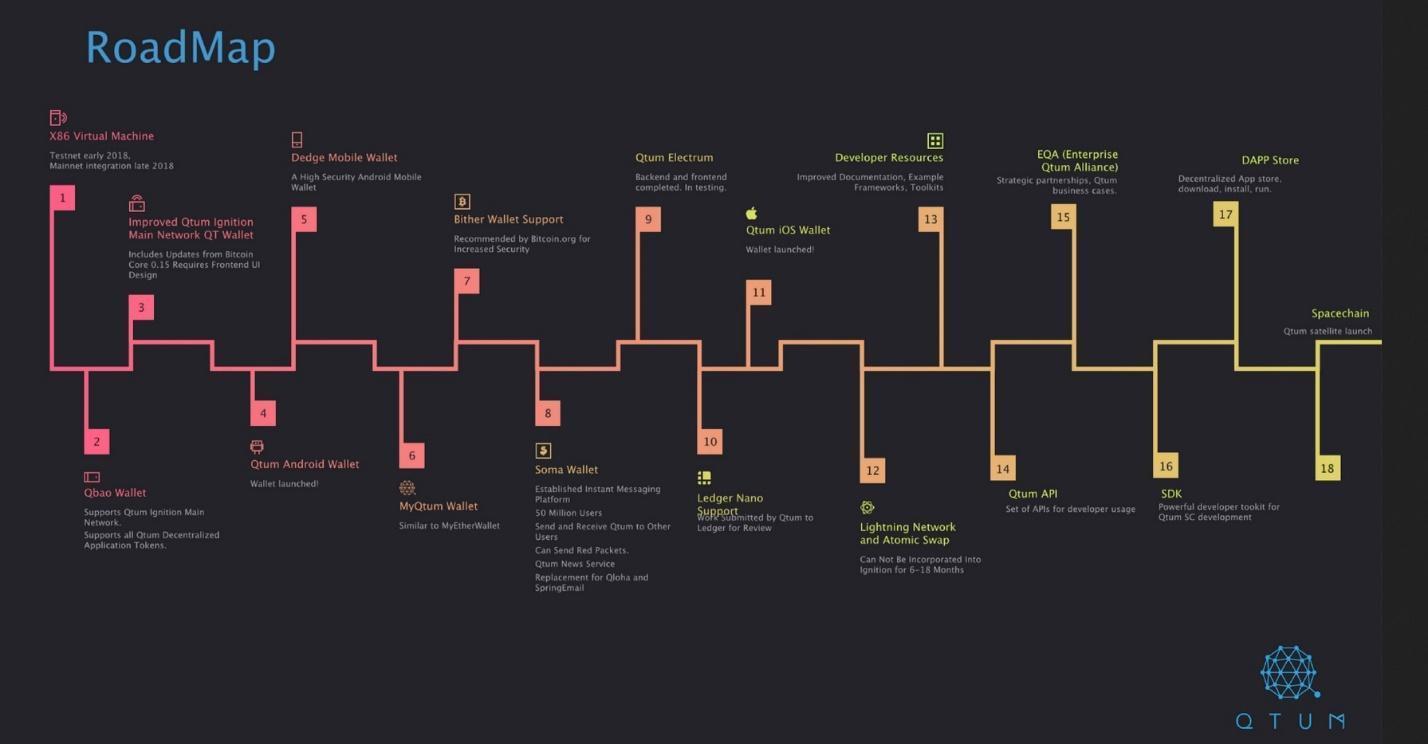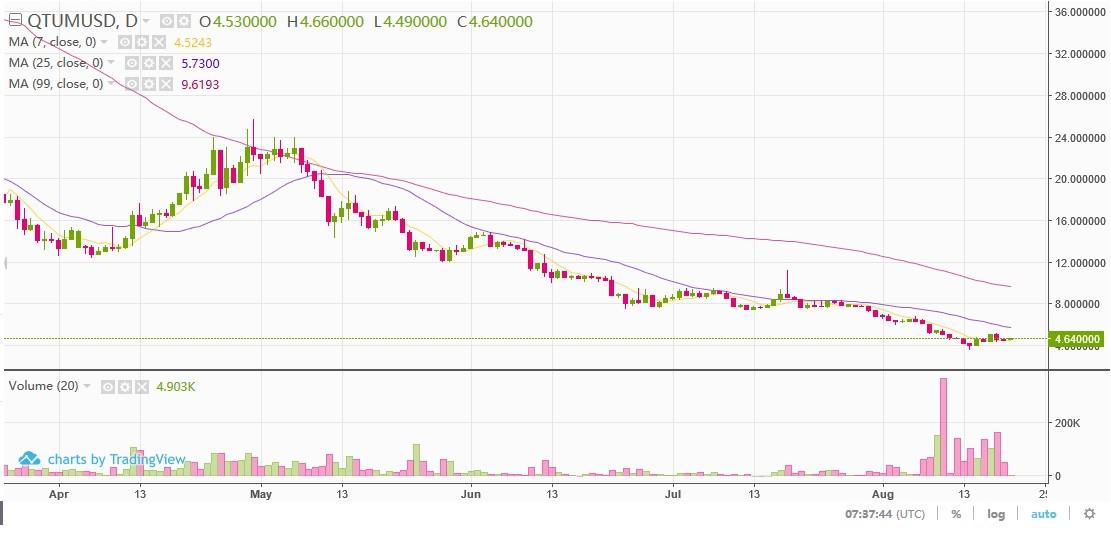Qtum (QTUM) Review – Blockchain Optimized for Business DApps
| Qtum Key Information | |
| Name | Qtum |
| Ticker | QTUM |
| Total Supply | 100,819,236 |
| Initial Price | $0.3 |
| Category | Enterprise Solutions |
| Website URL | Go to Qtum.org |
| White Paper URL | Read Qtum's WhitePaper |
By bridging the gap between the Ethereum Virtual Machine and bitcoin’s robust security, Qtum’s blockchain offers a stable ecosystem that is ideal for companies to develop scalable, safe decentralized applications.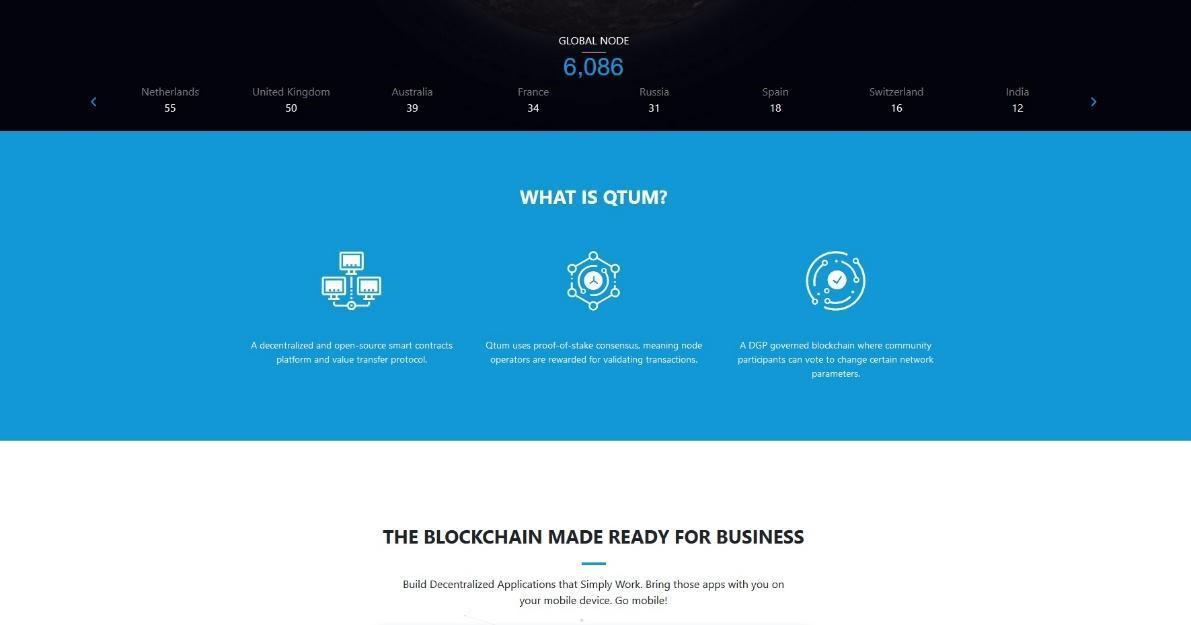
The Idea and the Team Behind Qtum
Qtum is a blockchain protocol that combines the Ethereum Virtual Machine (EVM)—which is used for decentralized application development—with a fork of the bitcoin core chain. The company achieves this hybridization via a third layer called the “Account Abstract Layer” which bridges the divide between the two technologies.
The goal behind Qtum’s three-layer technology is to provide a blockchain that is optimized for business use by combining Ethereum’s dApp ability and its Proof of Stake consensus with bitcoin’s Unspent Transaction Output model. Using the EVM allows for a stable and proven development ecosystem although Ethereum has well-known issues both in throughput capacity and in security. Qtum resolves this issue by using bitcoin’s famously unfailing blockchain. Most importantly, it adds key services including its “oracles”, a native wallet, and a smart contract management application that provides tools for businesses to migrate their services to a secure blockchain platform.
The Qtum Foundation is made up of veterans of some of the tech world’s biggest companies and includes a broad array of experience in different sectors. The company was founded by Patrick Dai, a former Alibaba employee who became a blockchain enthusiast early on. The team is rounded out by an international group of tech veterans that include experience in cryptocurrency, full stack server development, telecommunications, and cybersecurity. The Qtum foundation’s backers are a variety of venture capital veterans, angel investors, and other large blockchain companies that have placed their faith in the company’s vision. Qtum also employs Jeffrey Wernick, a veteran with decades of experience in financial services and investment, as an advisor.
Qtum Partnerships
One area where Qtum has been aggressive is in seeking out partnerships with major companies both inside and outside the blockchain sector.
In April 2018, Qtum announced a partnership with Energo Foundation, the Philippines’ largest clean energy producer. Under the terms of the partnership, Energo will use Qtum’s blockchain to develop better measurement, registration, and settlement systems for local microgrids and energy users in the country.
In June 2018, the company announced a new partnership with Qihu 360, China’s largest public software company, and one that specializes internet Security. This came at the same time as an announced partnership with Baofeng, another software leader in the country. This partnership will see Baofeng deploy nearly 50,000 nodes on the Qtum chain as well as develop tools for copyright protection and content distribution. Qihu 360 will partner with Qtum to develop diversified applications using Qtum as well as build a blockchain research lab in tandem.
In July 2018, Qtum and Celer Network announced a partnership to integrate the latter’s scalability solutions into the Qtum chain to provide faster and more flexible services for developers. Later that month, Qtum announced that it would be launching on Amazon Web Services through Amazon Machine Image. This will make it easier for companies already on AWS to migrate to blockchain and build applications for their operations.
QTUM Token Price History
Qtum successfully launched an ICO between March 12th and March 17th, 2017 and raised an estimated $15 million. QTUM tokens had an initial price of $0.3000 and reached an all-time high of $103.4500 in January 2018. A few weeks prior to QTUM hitting its peak, bitcoin reached a historic high price of over $19,500 before settling much lower shortly after. Also in January, Qtum announced its massive partnership with Baofeng. Following its peak in January, Qtum has settled lower. At the time of writing, one QTUM token is worth around $4.5
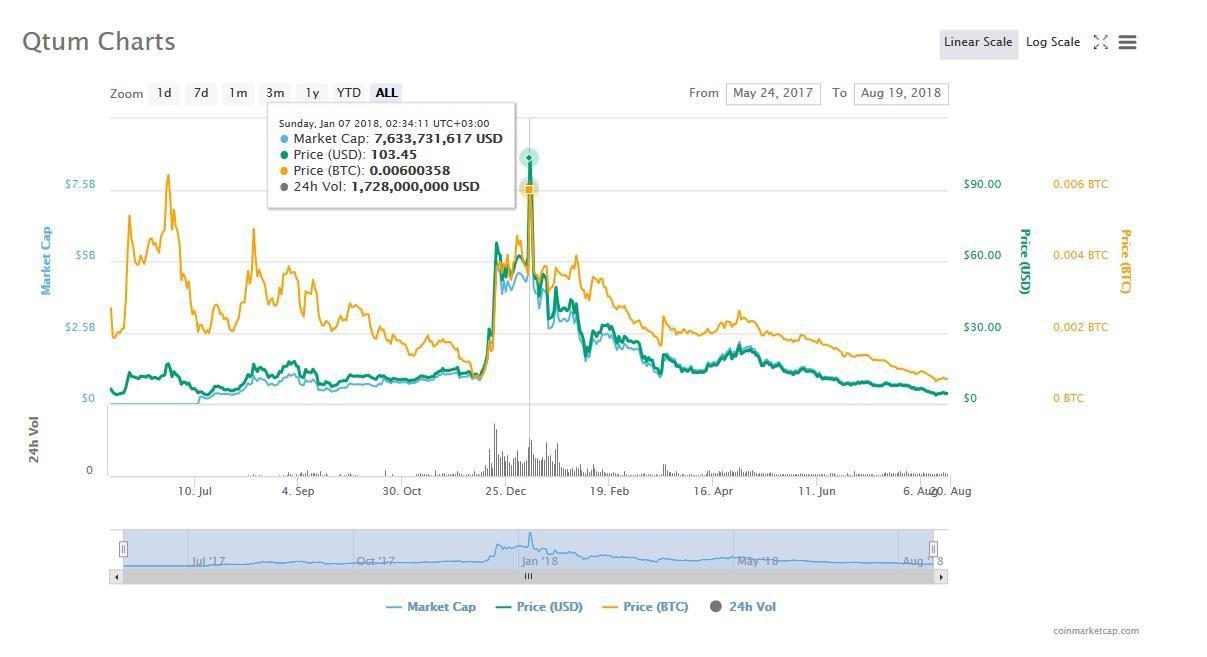
The Qtum Technology
Qtum is built as a three-layer chain that incorporates the Ethereum Virtual Machine, a fork of the bitcoin core chain, and the company’s proprietary Account Abstraction Layer. The Qtum protocol uses EVM as a foundation for dApp development, taking advantage of the technology’s Proof of Stake consensus to remove the need for constant mining and reducing the resource needs for verifying transactions. This also removes the necessity to mine coins as all coins available on the blockchain are created at genesis.
Qtum uses bitcoin’s blockchain as a security foundation and for the Unspent Transaction Output (UTXO) model to prevent fraud and ensure greater security. The Unspent Transaction Output model adopted from bitcoin is essential in guaranteeing that transactions cannot be recorded twice and adds a layer of security to Qtum’s blockchain.
However, the use of both the Ethereum blockchain and the bitcoin blockchain require a layer that can make communication between the two possible. It achieves this by converting bitcoin’s unspent transaction outputs into the “account balance” model Ethereum uses.
Thanks to its use of the EVM, Qtum also lets companies quickly and easily create tokens and even automate the process of managing supply chains. Thanks to its standardized ecosystem, Qtum offers tools that create human- and machine-readable contracts and make smart contracts more resistant to errors, even as they’re more flexible.
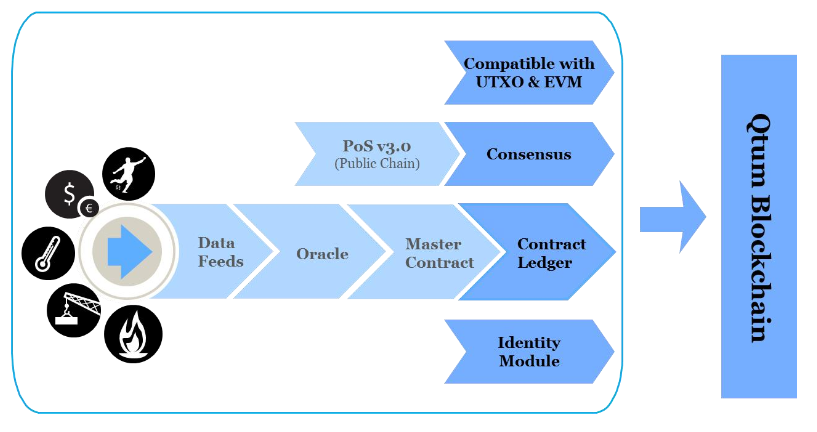
Most importantly, Qtum adds several key services that make it ideal for business:
Oracle:
Qtum allows for trusted external third parties to join a specific chain to monitor smart contracts and provide off-chain calculations, supply additional data, and assist in computations. This generates an additional layer of trust for transactions between companies and creates stronger security for smart contracts.
Mobile Applications:
Qtum also allows for smart contract management directly from mobile devices—something which has previously been difficult, if not impossible—thanks to its use of light clients. This model allows for nodes that do not keep a full history of the blockchain to participate and add to the chain by storing only the most recent and relevant transactions.
More importantly, Qtum also uses bitcoin’s Simple Payment Verification, which lets wallets confirm transactions without having to verify its contents. This also greatly improves transaction speeds for mobile.
QTUM Wallet:
Qtum provides a wallet for users to store their QTUM tokens, and which has added unique functionality. The product is fully mobile and lets users directly interact with smart contracts from the application.
The QTUM Token
The QTUM token is used to access most of the services available to businesses and developers on the Qtum blockchain. This includes executing code, building applications, and executing smart contract transactions. The token derives its value from use and overall demand.
The distribution of QTUM, per the company’s white paper, is as follows:
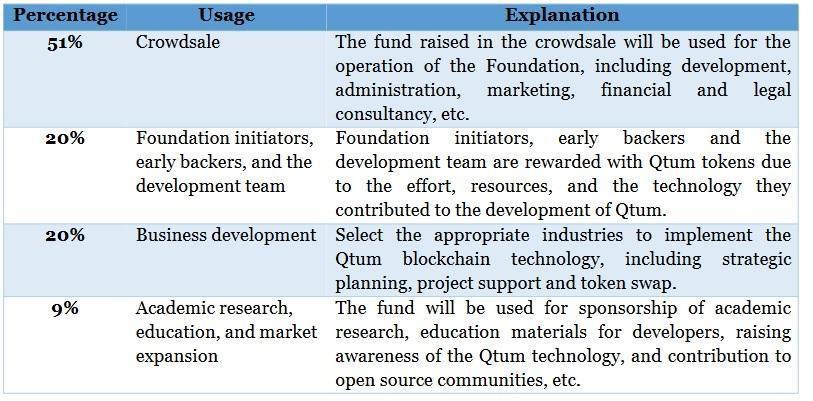
The company eventually plans to allocate 80% of all available QTUM to the community to help expand the ecosystem and provide a better service. The remaining 20% will be distributed to the founder, early backers, and development team.
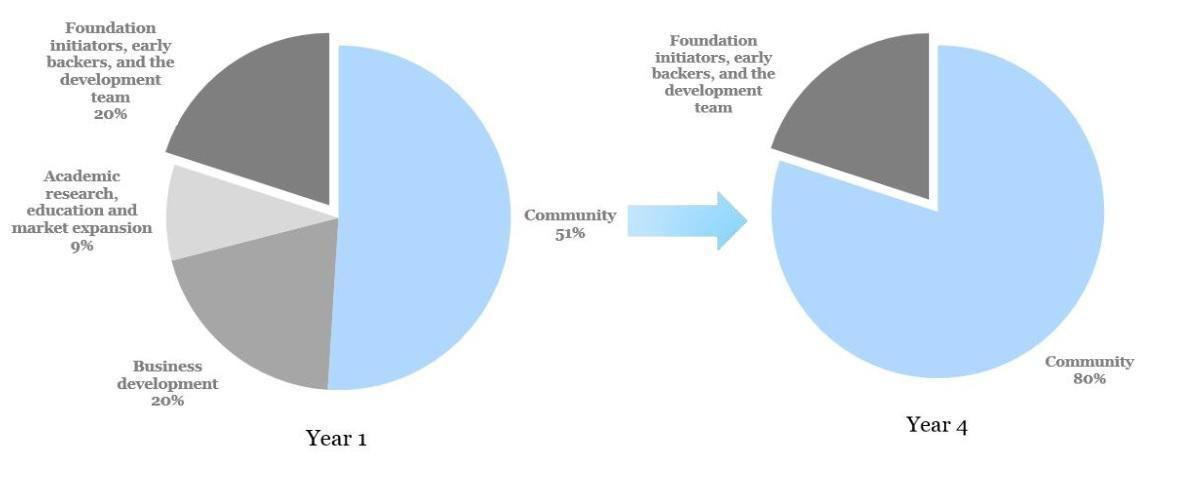
How to Purchase QTUM
Because QTUM cannot be mined, users looking for the token should visit an exchange to purchase it. QTUM tokens are not currently purchasable with fiat currency, so the token must be exchanged for other cryptocurrency.
The token is exchangeable for both bitcoin and Ethereum on crypto exchanges, however. Fortunately, QTUM is listed on several of the largest exchanges on the market including Binance, Bittrex, and OKex. Currently, the 24-hour volume of QTUM traded on Binance is $1,699,215.52.
QTUM is also available on the following exchanges
- ZB (Trade QTUM with BTC on ZB)
- LBank (Trade QTUM with BTC on LBank)
- EXX (Trade QTUM with USDT on EXX)
- EXX (Trade QTUM with ETH on EXX)
- Allcoin (Trade QTUM for BTC on Allcoin)
How to Store QTUM
QTUM can be stored directly in the company’s QTUM wallet, which is available for Windows, OSX, iOS, Android, and Web. The company also offers a hardware wallet from Ledger to store QTUM. Additionally, the company offers an Electrum wallet, and QTUM can be stored in Bitpie wallets.
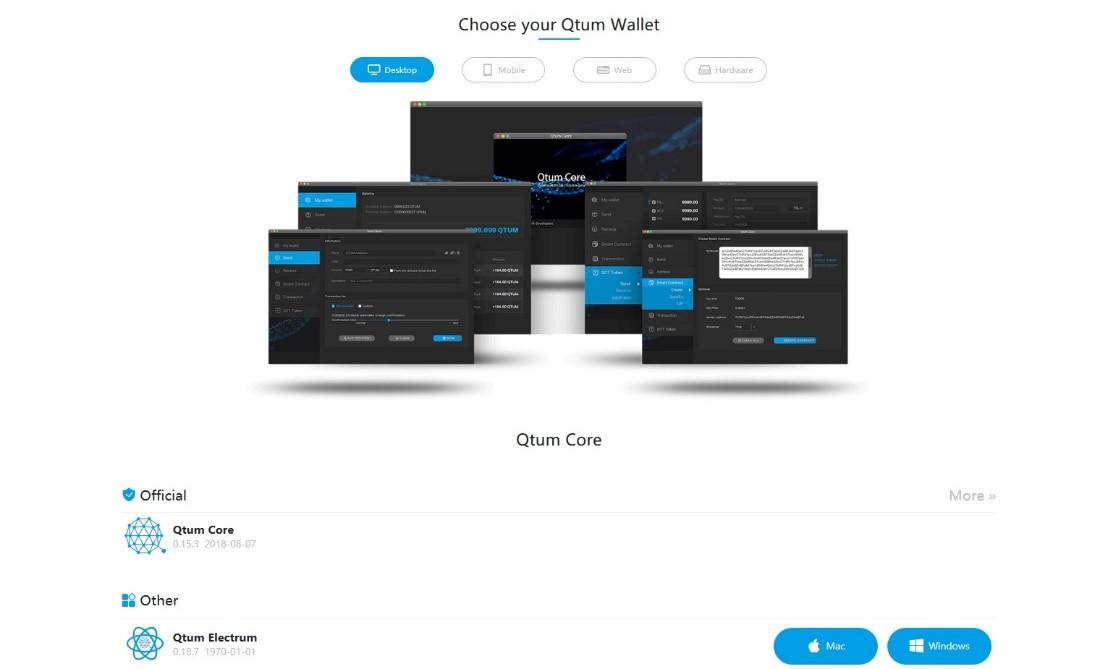
QTUM wallets can be downloaded here
Roadmap and Future Plans
Since launching its mainnet in September 2017, the company has continued to introduce new integrations, including several APIs, and adding unique features. New plans for 2018 include fully integrating an x86 virtual machine into the mainnet in late 2018 as well as adding support for new wallets. Additionally, the company plans to incorporate Lightning Network and Atomic Swap technology, as well as build a full dApp marketplace.
